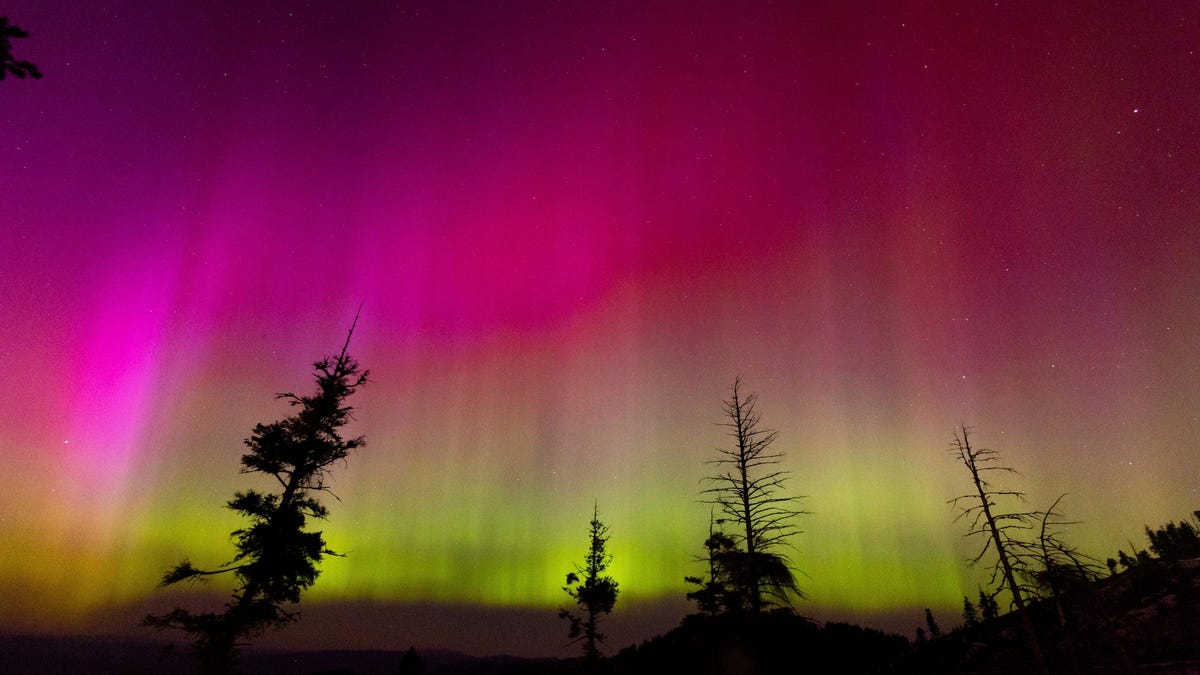
On Friday, Earth was hit by the strongest geomagnetic storm in 20 years. Intense solar activity sent bursts of radiation toward Earth, causing fluctuations in the upper atmosphere that led to disruptions in the power grid and radio blackouts, among other technologies and infrastructure.
The National Oceanic and Atmospheric Administration’s Space Weather Prediction Center issued an unusual warning on Thursday, informing the public of five Earth-directed coronal mass ejections that would amass to produce a severe solar storm.
Advertisement
The radiation spewed by the Sun began to hit Earth on Friday and persisted through Sunday, resulting in colorful aurora borealis that took over the skies in many parts of the world. Aside from the natural wonder, the geomagnetic storm also affected broadband and GPS satellites in orbit.
NOAA categorized the solar storm as G5, or “extreme,” the first of its kind since October 2003. The Sun is approaching its solar maximum, a period of increased activity during its 11-year cycle that’s characterized by intense solar flares, coronal mass ejections, and massive sunspots. The latest CMEs observed on the Sun were associated with sunspot AR3664, which stretches across nearly 124,300 miles (200,000 kilometers). It’s so big that you can view it yourself using eclipse glasses (but it’s going to disappear soon from our line of sight).
Advertisement
The most intense solar storm ever recorded took place in 1859. The Carrington Event was also a G5 on the geomagnetic storm scale, and it resulted in major disruptions to compasses and telegraph lines, even sparking flames in some telegraph offices through the wires. The solar storm that took place this past weekend was on the lower end of a G5, and it didn’t end up causing too much damage, but the Sun’s tantrum did have an effect on some tech we rely on daily.
As charged particles from the Sun hit Earth’s atmosphere, they can create oscillations in the planet’s magnetic field. By Saturday, there were reports of power grid irregularities, loss of high frequency communications (i.e. bands ranging from 3 MHz to 30 MHz, which are commonly used for long-distance communications, including military operations, radar systems, and contacting ships at sea), and some GPS disruptions, NOAA’s Space Weather Prediction Center told NPR.
Advertisement
High frequency radio blackouts were also observed throughout Asia, eastern Europe, and eastern Africa shortly after an X-class solar flare peaked in the early hours of Friday morning, according to Space.com.
Advertisement
Solar radiation impacts Earth’s ionosphere, a layer in the upper atmosphere, causing fluctuations that can interfere with radio transmissions from satellites passing through this layer. The fluctuations can also prevent radio transmissions from bouncing off the ionosphere, or degrade the transmissions as they go through and interact with the increased number of electrons in Earth’s upper atmosphere.
Advertisement
On Saturday, Elon Musk said that the “major geomagnetic solar storm happening right now,” was causing strain for SpaceX’s broadband internet satellites. “Starlink satellites are under a lot of pressure, but holding up so far,” Musk wrote on X.
John Deere sent out a text message to its customers on Saturday warning farmers that the accuracy of some of the tractor systems may be “extremely compromised.” The “base stations were sending out corrections that have been affected by the geomagnetic storm and were causing drastic shifts in the field and even some heading changes that were drastic,” the company wrote.
Advertisement
Farmers in South Dakota reported having issues with their equipment and that the GPS system would show their tractors going in circles or the auto steer wasn’t working, local news outlets reported.
There may also be a delayed effect on satellites in orbit as solar plasma heats up the atmosphere, which increases atmospheric drag that pulls down satellites from their orbit. In February 2022, a coronal mass ejection led to 38 commercial satellites being lost, according to NASA.
Advertisement
Scientists have been observing the Sun for centuries but there’s still so much we don’t know about our host star, including how to better predict space weather. This past weekend, the solar storm provided a chance for scientists to observe the Sun’s outbursts with detail and learn more about how it affects us here on Earth. With April’s total solar eclipse followed by a geomagnetic storm, the star is having quite a year so far.
More: Still Have Your Eclipse Glasses? Use Them to Look at This Massive Sunspot
Services Marketplace – Listings, Bookings & Reviews